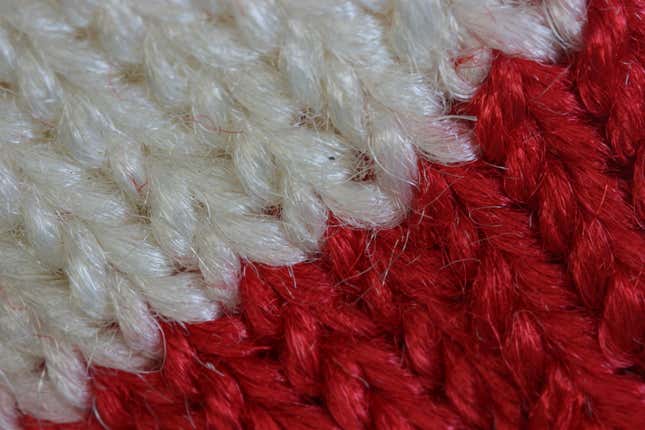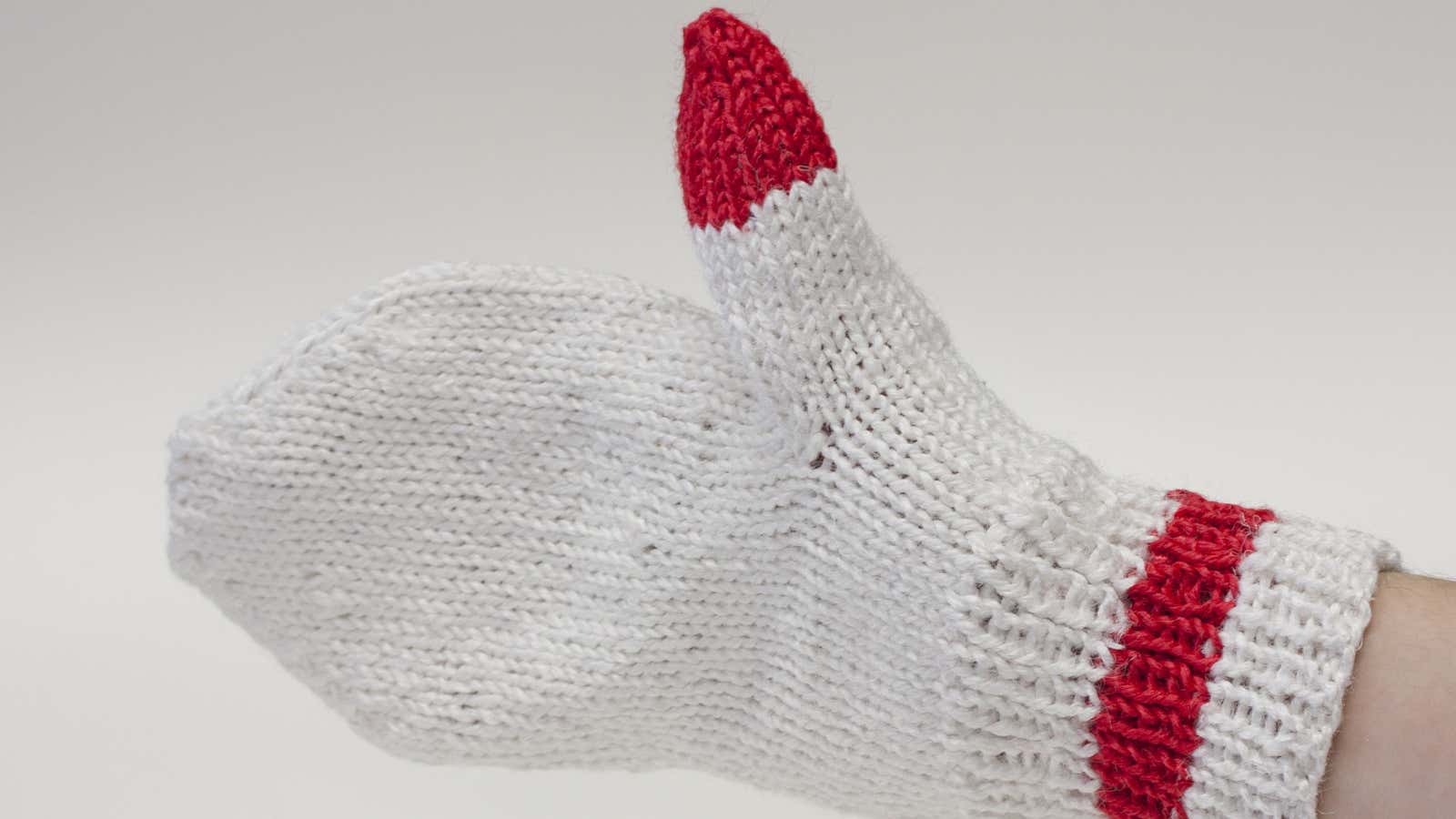The factory farming of livestock is a growing industry in the US, and in its wake it leaves a growing pile of animal waste products—bones, muscle, and fatty tissue, much of it going unused. At the same time, people are buying more clothes, which require more virgin resources to make. Gross as it may sound, it makes sense from a sustainability perspective to try to use some of those animal waste products to clothe shoppers.
To that end, a team of Swiss scientists has created a fabric that’s similar to merino wool but is actually made of gelatin derived from pig skin. It’s the same gel-like stuff used in a range of well-known products, including gel capsules and Jell-O, and it is commonly obtained by boiling animal skin, ligaments, tendons, and bones. In this case, it’s extruded through syringes, forming long, continuous filaments that are then spun into yarn. The yarn is knitted into fabric, with a result remarkably like sheep’s wool.

The team, led by Dr. Wendelin Stark and PhD candidate Philipp Stössel of the Swiss Federal Institute of Technology in Zurich (ETHZ), published the results in the journal Biomacromolecules.
The process isn’t too far from the way polyester is made. The big difference here is that the gelatin is dissolved in water and then precipitated out with propanol, rather than melted down, the way polyester is. According to Stössel, it’s about five times more expensive to make than polyester, though he says this issue is one all biopolymers face at the moment.
The real advance demonstrated in the study is making the fabric water-resistant. Because it’s made of gelatin, it doesn’t exactly hold up well on its own. ”The fabric in water will just get transparent in a matter of minutes and dissolve,” Stössel says. To prevent your biopolymer sweater melting off you in a passing shower, Stössel and the team made it water-resistant by applying epoxides, which are used in epoxy resins, and a formaldehyde treatment, which is a regularly used if not particularly appealing chemical.
Stössel says they’re still working on improving its “wet strength,” though. It tears a bit too easily when damp.

While they’ve managed to get the fibers down to about half the width of a human hair, they haven’t yet made them as fine as the highest-quality merino. Stössel says it’s certainly possible, but they haven’t yet developed the equipment to do so. ”As we have to do everything by hand, we have some limitations here,” he says.
The fibers are also perfectly smooth, as opposed to scaled, as natural wool is, which makes them shiny. And those who shun fur and leather may also prefer not to clothe themselves in a pig-skin derivative.
But the technology shows plenty of promise, and there’s certainly no shortage of the gelatin needed to make it. Transparency Market Research forecasts that we’ll produce more than 450,000 tons of gelatin globally by 2018.
Now the team is reportedly just looking for an industrial partner to start mass production.
